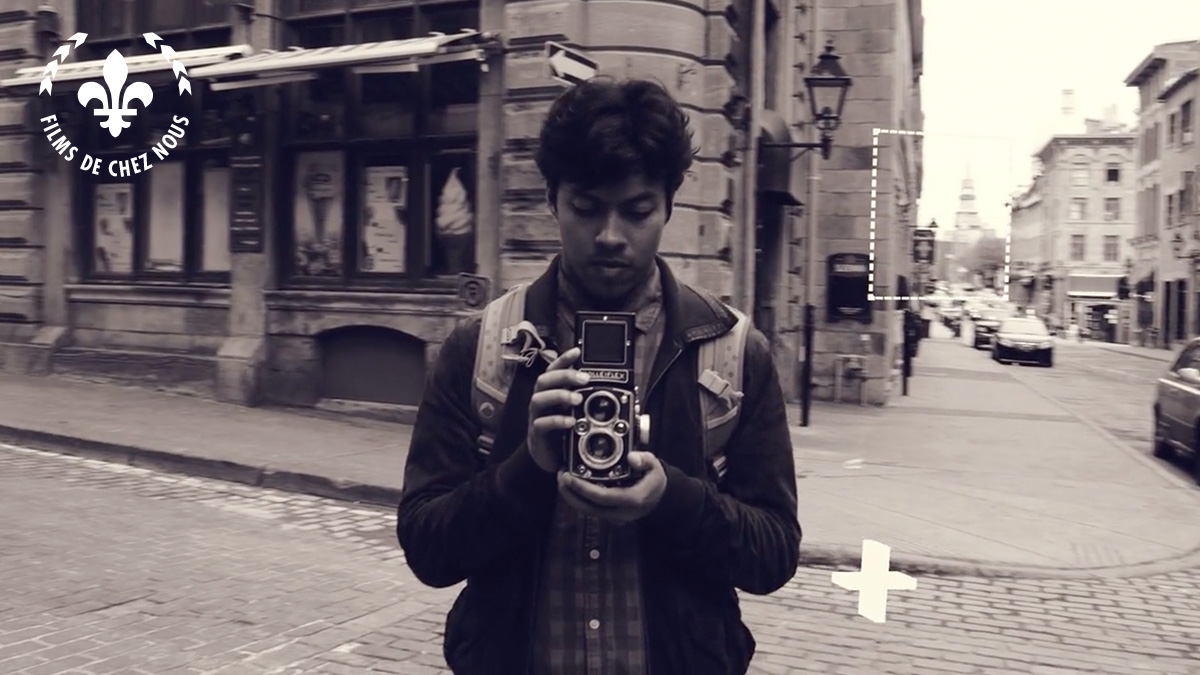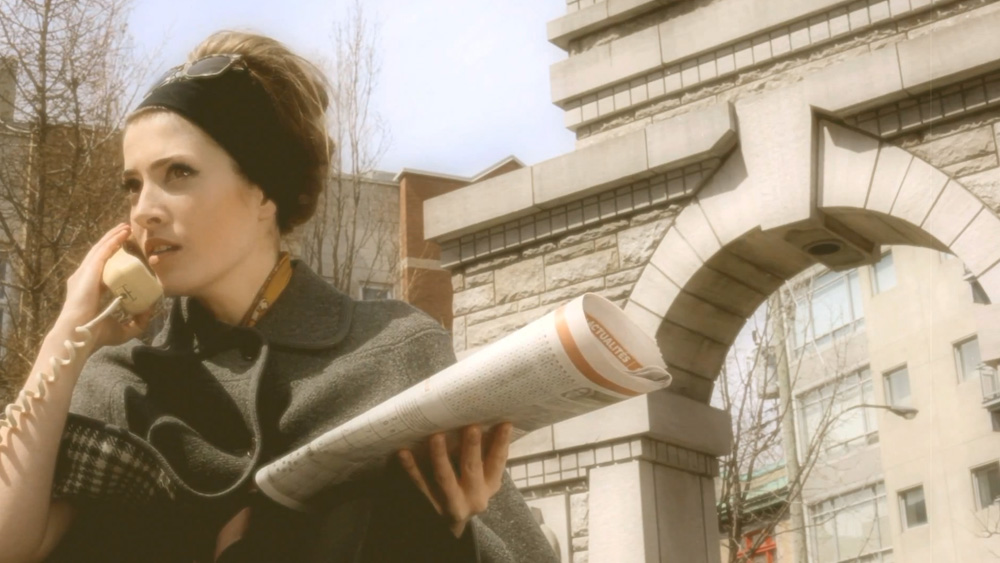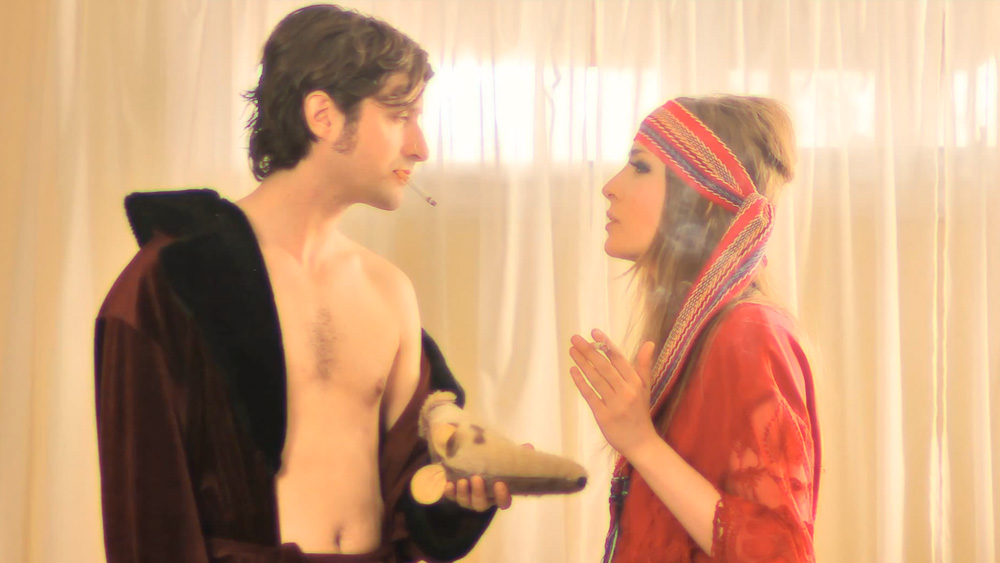A composer meets with her composition teacher to help put the final touches on a new piece she is writing for string quartet.
The Snow Leopard is a reflective and intimate drama that delves into the creative journey of a young composer, portrayed by Serra Naiman, as she seeks guidance from her mentor, played by Julian Lopez Morillas. Set against the backdrop of their collaboration, the film explores the intricacies of mentorship, artistic growth, and the delicate process of finalizing a piece of music. Through their evolving dialogue, we witness the emotional and intellectual challenges that come with creating art that resonates deeply.
Directed by Taylor Joshua Rankin, a filmmaker and composer with roots in contemporary classical music, The Snow Leopard beautifully captures the intersection of sound and story. Rankin’s background in experimental and minimalist composition enriches the film’s atmosphere, adding layers of emotional depth and musical authenticity to the dramatic narrative.

What inspired the story of a composer and her teacher? Was there a personal connection to the world of classical music that influenced the narrative?
As someone who has gone through the world of academia as a composer, and as a classical and jazz instrumentalist, I’ve been working with private teachers all my life. There’s something so medieval but special about the relationship because more often than not you seek out this person to work with, and to hone your craft with. Different teachers can offer differ insight and the most important thing becomes pairing yourself with the right teacher for you, especially as a composer, because there’s such a wide array of compositional voices and pedagogy. So from the start I wanted to build a story that felt like it came from a real world experience as a new-music composer, and show the art of composition as something not “magical”, or showing composers as these saint-like geniuses, but like any sort of craft and skill: something you need to work at.
The film’s strong photography and tense operatic soundtrack are integral to its tone. Can you talk about how you worked to marry the visuals with the music to enhance the emotional depth of the story?
So I was writing the music at the same time I was writing the screenplay. This gave me a chance to flip from one to the other if I found myself in a rut. This is something I’ve found I respond well to, jumping between two creative projects at the same time. The music was fully written and recorded way prior to the start of production. I actually used the music as part of the pitch deck to help get people on board with the project. When I was writing it, I had a very clear idea of what I wanted the music to sound like from the get go, and the closer and closer I got to realizing that initial idea of the sound, the more the tone of the entire film came into view. Marrying that music to the tone of the film visually came from expressing the nature of the characters through the use of camera movement, lighting, lens choice, and direction of performance. I knew that if I was showing these characters as having such control over their own compositional skill, I needed to express that control on screen by the use of highly choreographed camera movements. The idea was for it to feel like a composed piece of music on screen, controlled and deliberate and focused, but also evolving. Every camera movement and blocking was written out and scrutinized and rehearsed many, many times before the actual days of production.

How did you approach casting for the roles of the composer and the teacher, given the intense, intellectual relationship between the two characters?
We found Serra, who plays The Apprentice character, through an online casting call. Not only did we respond to her work as an actor, but she and her family have a background in music as well. When we sent her a few scenes to read, including the monologue near the end of the film, we were blown away by her power, control, and vulnerability, and we knew she was perfect for the role. The part calls for a range of emotional expression and she hit everything out of the ballpark. Julian, who plays The Mentor came from a word-of-mouth recommendation by a fellow actor in the Bay Area Theater scene. Julian is well regarded as an actor specializing in Shakespeare and is also an educator. When we started meeting about the part, he would ask me all these questions about being a composer and about different kinds of composition techniques, and he really wanted to dig deep into the text and subtext of the material.I sent him hours and hours of lecture videos on past composition instructors of mine and he absorbed it all. Julian is also an amateur composer himself. When we finally got him and Serra together in a room for a chemistry read, we knew we were onto something special.
What role does music, particularly the string quartet, play in shaping the film’s narrative and emotional journey?
So the string quartet music is playing a couple different roles in the film. Most obviously it’s the music that begins as diegetic (the rehearsed music by the quartet near the end of the film) and then moves to non-diegetic by transforming into the film’s score. It also serves as a narrative device, as a physical thing that exists within the film. The string quartet music as a physical thing is the music that The Apprentice has been working on leading up to this workshop with The Mentor. It’s a thing that means something different for each character. For The Apprentice the music is something written as an act of self-liberation, as a personal artistic statement, and for The Mentor it’s a piece that he intends to use for his own gain, something that will raise his own status as a composer/instructor. Portions of the physical music get workshopped by the quartet near the end of the film and then when the music becomes the soundtrack to the film, it leads us into this dreamy, nightmare, coda.
The music is also doing work in the film’s soundtrack as it is heard multiple times sped up or slowed down throughout the film. The opening shot of the film has the string quartet music, the same “The Snow Leopard” recording we’ll hear later, slowed down an extreme amount. And then during the one-er where the quartet show up and The Apprentice moves into the kitchen, the “Snow Leopard” music is heard but slowed down only slightly. Then later in the film we hear the quartet rehearse different portions of the music, until finally we hear the entire track, at normal speed, at the end of the film. You hear the same music 3,4,5 different times slowed down at different levels before hearing it in full. So the music of The Snow Leopard was really engineered to engage with every aspect of the storytelling.
How did you use lighting and camera work to enhance the emotional dynamics between the composer and her teacher?
So a lot of the staging of the actors and the camera was worked out ahead of time, (the actual choreography of the equipment and actors on screen). Much of the blocking was designed to show the emotional distance between our two leads. There’s also specific blocking of The Mentor entering or approaching The Apprentice’s space and her retreating from it, especially in the first half. This is all in service of the storytelling and emotional arc of the film. Joshua, our DP and I, met several times over the course of pre-production where I showed him films and scenes that I wanted him to think about while making this film. One scene would be an example of camera placement, another would be an example of lighting, and another would be an example of tone and dolly work. Joshua was an incredible collaborator and his expertise and craft is so evident in the film. He has such an eye for executing framing, and lighting design. He knew we wanted to portray something that felt real, and started as real, but then sort of spun off into a nightmare and so he put me onto these wonderfully expressive vintage lenses for everything in The Mentor’s house, and then these wild anamorphics for the opening dreamy sequence. As things move into an emotionally dark space, we enter a physical darker space. Whether it was a complicated set up with multiple backgrounds, or just a single, Joshua would bring everything to each shot in service of the film to enhance the dynamics of the characters.

What were some of the challenges in directing a film that focuses so deeply on an art form like music, which isn’t visual by nature, and how did you overcome them?
So yea, this was certainly a real concern, especially in a dialogue heavy film, and it was something that we went back and forth on. My biggest concern with telling a story about music was going to be the pacing, but I had hoped that there would be moments that would draw people’s attention, such as “performers playing music”, even in small snippets like in the rehearsal scene near the end of the film. I also felt that if the audience felt drawn in by our main character, they would follow her through the story. I also believed that while film is a visual medium, filmmaking relies on the power of sound and music for much of its effect, and if we kept pushing these elements throughout the story then the audience would remain engaged.
As the film centers on artistic mentorship, how did you approach portraying the complexities of the teacher-student relationship?
I really just tried to start from a place of real-world experiences. When you’re studying something with another person, you’re seeing them sometimes every week for years and years. You grow such a bond with your teacher, and the lines between a professional relationship and a social one can become so blurred. They are your friends, and your family, but also your instructor, and I really wanted to play with that level of familiarity, but also the defiance that can come from that comfortability.
Did you have any specific cinematic influences or inspirations when developing the visual style of “The Snow Leopard,” particularly the strong photography?
We were pulling on a wide variety of influences for this film, for specific reasons. Here’s a list of some: For camera movement: Long Day’s Journey into Night (Bi Gan), The Lighthouse (Robert Eggers), Eraserhead
(David Lynch), La Pointe Courte (Agnes Varda). For editing/media mixing: The House that Jack Built (Lars Von Trier). For
dialogue: I’m Thinking of Ending Things (Charlie Kaufman), Slacker (Richard Linklater), My Dinner with
Andre (Louis Malle). For blocking: 8 1⁄2 (Federico Fellini), La Pointe Courte (Agnes Varda), Rope (Alfred Hitchcock), The Silence (Ingmar Bergman). For sound design: Eraserhead (David Lynch), I’m Thinking of Ending Things (Charlie Kaufman)
And then also just generally: La Chinoise, Pierrot Le Fou, Blue, The Piano Teacher, Audition, and Powell and Pressburger’s The Red Shoes. In the beginning I was bringing collaborators and donors onboard by selling the film as The Red Shoes meets The Lighthouse.
What do you hope the audience takes away from this film, especially regarding the creative process and the often intense, intimate relationships between mentors and artists?
I want audiences to see a film where composition is shown as a living, breathing craft, that needs workshopping, and rehearsals, and tweaking, because that’s how it really is. There are so many “genius, magical, composer” films out there where the composer delves into their mind palace, or goes into the forest and takes ayahuasca, and writes something by hand and everyone marvels. In the real world, it’s an art form and a skill like anything else, something that needs time, energy, creativity, and hard work to get even decent at. I want to show the act of composition as a living, breathing organism. I hope people see the film and glimpse a taste of the life of a modern, living composer, and how at the end, technique, and craft is only to serve the means of making the kind of art you want to make.
Finally, can you tell which are your favorite all time short films, or some inspirational ones that you’ve seen lately?
I love Paul Thomas Anderson’s Cigarettes & Coffee. I like that “Bao” short a lot by Domee Shi. All of Lynch’s shorts are wonderful, and anything Don Hertzfeld puts out is incredible. My wife and I watch the animated The Snowman short film every year, such amazing visual storytelling and orchestration technique in the score. A friend put me on to this Japanese animated short called The House of Small Cubes which I fell head over heels for. I believe that was by a director named Kunio Kato. I saw a short that I loved at the 24th Beverly Hills Film Festival when The Snow Leopard screened, by these two directors starring Josh Brener from Silicone Valley called: Caller 102: A Ballad of Cyberspace. Sofia Coppola’s Lick the Star I really like too. I’ve seen and enjoyed Ari Aster’s shorts (Johnson’s, Beau, Munchausen, Basically, C’est La Vie, The Turtle’s Head). I like David Lowery’s short film Pioneer as well.




